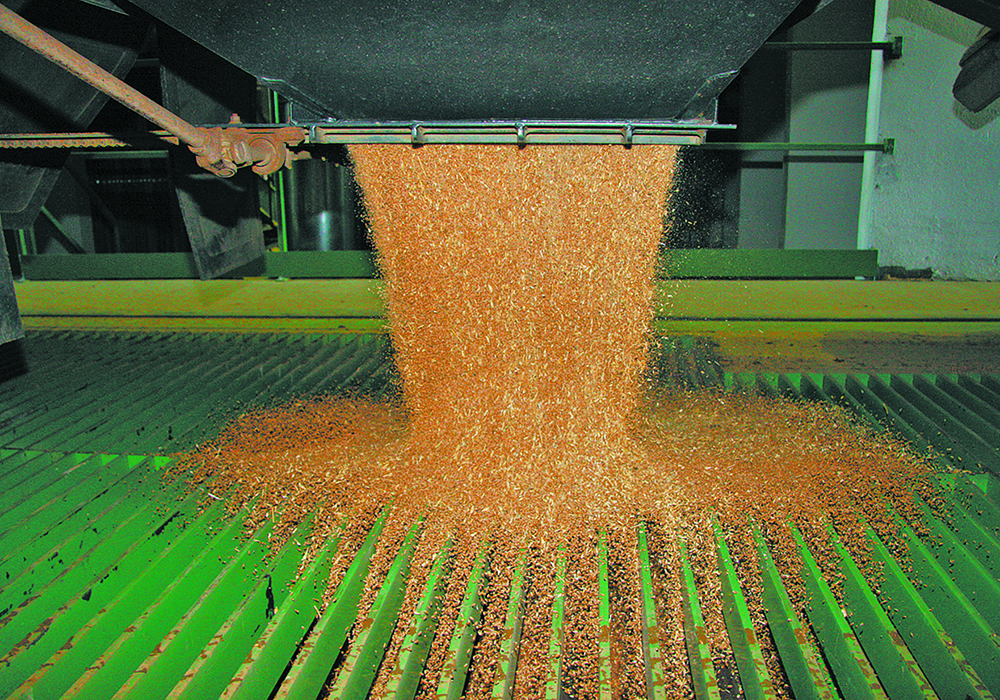The latest deep cuts to estimates of South American crops increase the likelihood of an extended period of high crop and food prices that will add to the factors driving inflation to the highest levels since the 1980s.
High inflation and the high interest rates that central banks use to fight fast-rising prices are hard on economies and a challenge for the average consumer.
But inflation is often fuelled by rising commodity prices and in regions that produce a lot of commodities, like Western Canada, the pain of rising prices can be offset by strong economic growth.
Read Also

Canada-U.S. trade relationship called complex
Trade issues existed long before U.S. president Donald Trump and his on-again, off-again tariffs came along, said panelists at a policy summit last month.
That was the case in the late 1970s and early 1980s and 2008-14.
We can examine that further but first let’s review the news.
Last week, Brazilian statistics agency Conab estimated that country’s soybean crop at only 125.5 million tonnes, down from its previous estimate of 140.5 million and well below the United States Department of Agriculture’s forecast of 134 million, released the previous day.
Conab also shaved its corn forecast by 560,000 tonnes, mostly reflecting a smaller first crop, to peg the total production (first, second and third crops) at about 112 million tonnes. The stability of that forecast will depend on whether drought continues and hurts the huge second crop, which is being seeded now.
Also, the Buenos Aires grains exchange cut its forecast of Argentina’s corn crop to 51 million tonnes from 57 million previously and below the USDA’s forecast of 54 million.
The exchange cut its soybean forecast to 42 million tonnes, down two million.
Chicago March soybeans settled up two percent over the week, corn up five percent and wheat up 4.5 percent.
Canola old-crop futures closed almost unchanged from the previous week, but new-crop November futures were up 1.6 percent.
Drought-reduced crops in South America almost guarantee that the price of the bedrocks of the grain market, corn and soybeans, will remain high for many months and probably longer.
That will keep upward pressure on all food prices.
Last week, the U.S. government said the January consumer price index was up 7.5 percent over the same time last year.
The food cost component of the index was up seven percent. The energy component soared 27 percent.
Canadian inflation numbers for January came out after this column was written.
Any hope that inflation would be transitory has now been rejected.
Economies around the world are recovering much better than forecasted. Omicron appears to be waning.
Employment levels in the U.S. and Canada are back to almost pre-pandemic levels and employers are having to increase wages to attract workers.
Most consumers in developed countries are in reasonable financial shape, and money that they would have spent on holidays and entertainment is instead going into durable goods like furniture, home renovations and recreational equipment.
Factories around the world are trying to meet the demand but there are bottlenecks with supply chains and staffing shortages.
In the case of agriculture, the inability to meet demand is compounded by back-to-back droughts in South America and the drought in Canada.
Oil production is falling short of demand as the Organization of Petroleum Exporting Countries and its partners, known as OPEC+, seems incapable of meeting even its modest output goals. U.S. oil producers are starting to reinvest in production but it will take months for output to climb, and Canadian producers remain constrained by lack of pipeline capacity.
There is a sudden demand for all sorts of raw materials, including energy, metals, minerals, fertilizer, wood and crops, which producers are having trouble meeting.
Massive new investments to electrify transportation and industry have created huge demand for metals and minerals needed for batteries.
As Jeff Currie, head of commodities research at Goldman Sachs Group, told Bloomberg News: “This is a molecule crisis. We’re out of everything. I don’t care if it’s oil, gas, coal, copper, aluminium, you name it, we’re out of it.”
While all this creates many problems, it also sparks opportunities for, and investment in, places that produce the commodities.
Western Canada is such a place rich with oil, gas, agricultural land, fertilizer production, mining and forestry.
The commodity boom of the 1970s led to huge economic and population growth here in the 1975-85 period, even with high inflation and soaring interest rates.
And the commodity boom of 2006-08 again saw good times here stretch into 2014, even as much of the rest of the world was shaken by the Great Recession.
But commodity booms usually go bust as the new investment raises production and shortages disappear.
It is important for people and governments to realize that the good times won’t last forever and to save and invest windfalls wisely to ensure they’ll survive the bad times.















